By Sid Dobrin
Nearly 71 percent of the Earth’s surface is covered by saltwater. That’s about 128 million square miles of ocean surface and 310 million cubic miles of ocean volume. The average depth of the ocean is about 12,080 feet (about 2.29 miles); its deepest point reaches 36,200 feet (just under seven miles) in Challenger Deep at the southern end of the Mariana Trench in the Pacific. Despite its size, humans have seen less than 5 percent of this oceanic vastness – and less than 1 percent below one thousand feet. Yet, approximately 40 percent of the global human population lives within 65 miles of the ocean and more than 870 million people depend on ocean fisheries for their livelihoods and over three billion people depend on harvesting the ocean as a significant source of their animal protein. That is, notwithstanding our limited knowledge and access – limits often moored by technologies and cultures – humans depend significantly upon the ocean. That dependence has resulted in massive abuse and degradation of the world’s oceans.
I could give you more numbers, but you’ve probably already heard them repeated ad infinitum in documentaries, in nature shows, in popular press media. I could fall back to a familiar rhetoric of arguing that because the ocean is big it needs protecting, but that rhetoric is reductive, oversimplified, and ineffectual. I could show you pictures of coral bleaching, of hypoxic zones, of plastic pollution. But you’ve seen that sort of thing before. Instead, I want to ask you a question similar to something Melody Jue says in “Beyond Terrestrial Thinking: Oceans, Estrangement, Media” regarding a course she took in graduate school about place and space. Jue writes, “while I enjoyed many of the readings, it struck me that none of them concerned the ocean.” I have had similar realizations throughout my academic work in environmental rhetoric, ecocriticism, and ecocomposition. So, if we’ve heard these numbers, if we’ve seen these pictures, and if the ocean is so damn big, I have to ask: where is the ocean in ecocriticism?
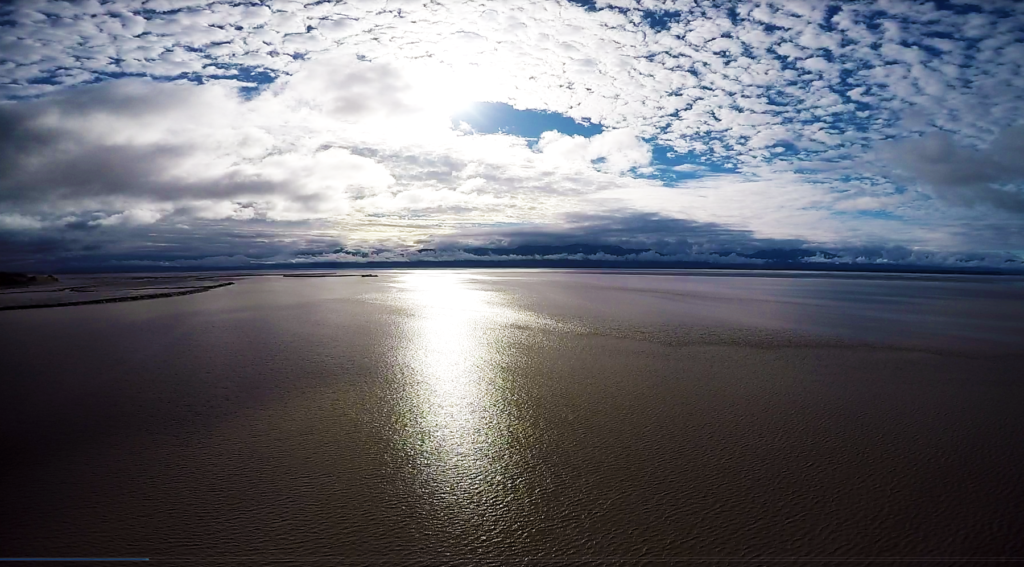
Dena’ina (Cook Inlet, Alaska), the most populated watershed in Alaska. Photo credit: Sid Dobrin (used with permission).
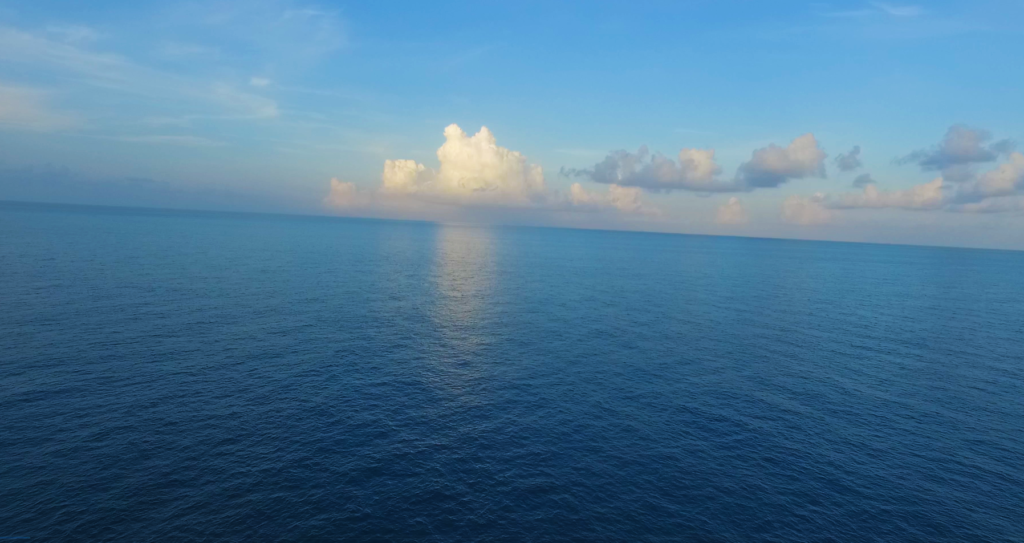
A calm day on the Atlantic. Photo credit: Sid Dobrin (used with permission).
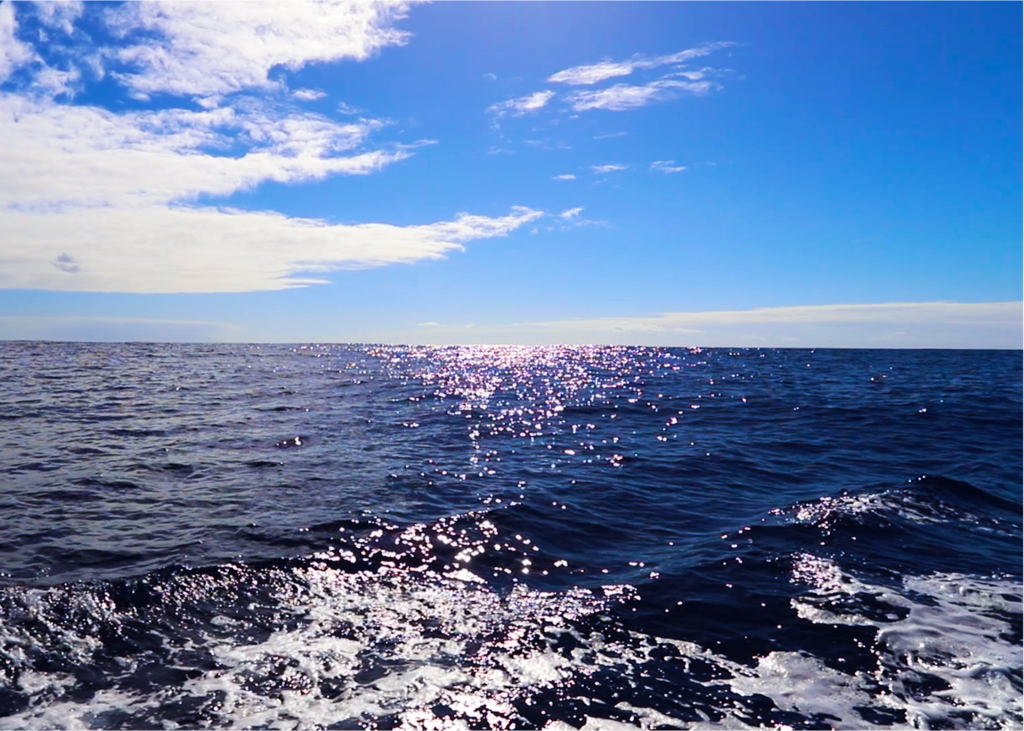
Offshore, Pacific Ocean. Photo credit: Sid Dobrin (used with permission).
There are two currents that led me to write Blue Ecocriticism and the Oceanic Imperative, one a personal history and one an academic history, and neither flow independent of the other. I wrote much of Blue Ecocriticism while simultaneously writing Fishing, Gone? Saving the Ocean through Sportfishing (Texas A&M University Press, 2019), a book about the sportfishing industry, ocean conservation, and the impact of global industrial marine harvest. Yet, as tied as that book is to my life as an angler, scuba instructor, boat captain, Chair of the American Sportfishing Association’s Advocacy Committee, freelance writer for several fishing and conservation magazines, co-owner of a media business tied to the sportfishing industry, underwater filmmaker, and, generally, blue water bum, that book did not give me the opportunity to take up the questions I had that emerged from my work in ecocriticism, ecocomposition, environmental humanities, and environmental rhetoric (and even digital humanities): primarily, why have these humanities-centric disciplines been mostly blind to ocean?
I wrote Blue Ecocriticism with ASLE in mind. That is, you – the scholars, critics, artists, teachers, writers, and activists who take up the mantle of ecocriticism and ecocomposition – have been my intended audience from the outset. My objective in Blue Ecocriticism is to draw attention to the remarkable lack of attention paid to ocean in ecocriticism and ecocomposition despite the vast history of texts – literary and otherwise – that directly and indirectly contribute to the construction of ocean in cultural imaginaries. With a few exceptions – the work of Stacy Alaimo, Dan Brayton, Serenella Iovino, Melody Jue, Steve Mentz, and a handful of others – ecocriticism and ecocomposition, for the most part, have beached critical work about ocean and oceanic. Don’t agree? Consider this: over the last decade, ISLE: Interdisciplinary Studies in Literature and Environment, the hallmark publication of ecocritical work, has published forty issues that include approximately 388 scholarly articles. Of these, a total of only nineteen articles might be identified as related to matters of the ocean. That’s about 4 percent of the total articles published in the journal over a decade, and many of these appear in the 2014 special issue about global warming. I point this out not to criticize the incredibly important role ISLE has played in the evolution of ecocriticism and the phenomenal scholarship that has appeared there, but as an example of what I call in Blue Ecocriticism – borrowing from Dan Brayton who adapts from Richard Louv – ecocriticism’s Ocean Deficit.
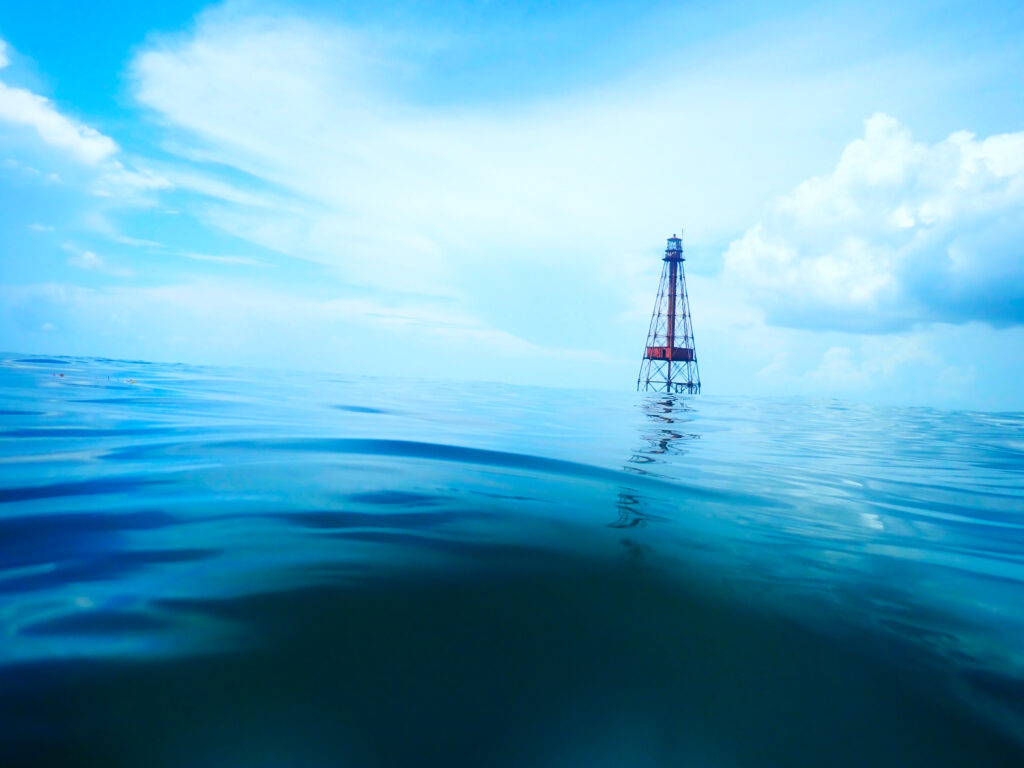
Navigational beacon, Florida Keys. Photo credit: Sid Dobrin (used with permission).
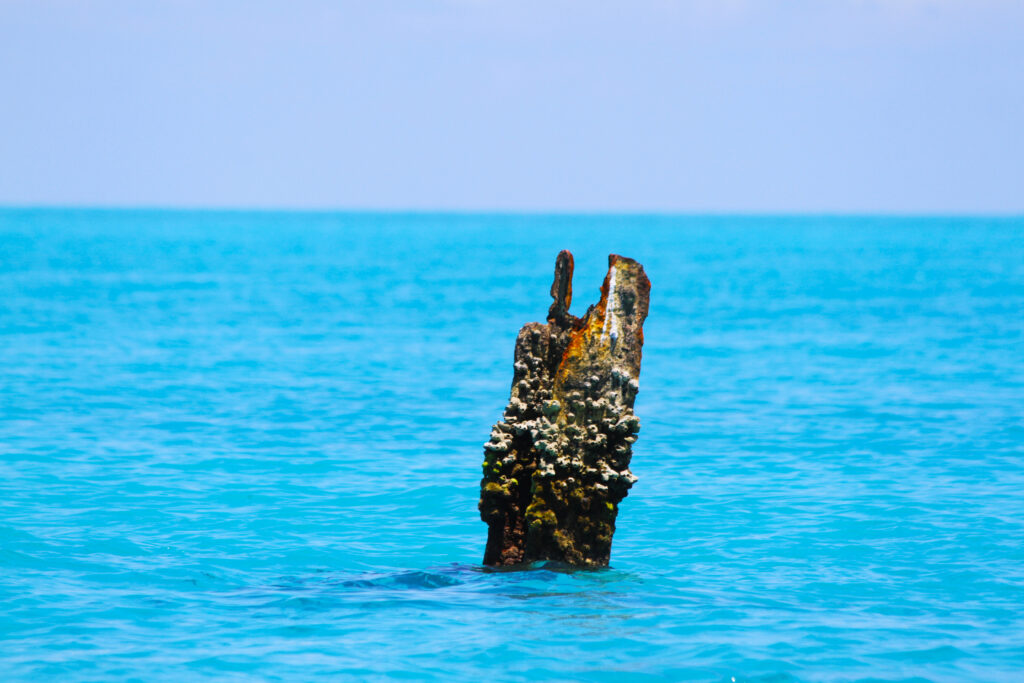
Nearshore, Atlantic Ocean. Photo credit: Sid Dobrin (used with permission).
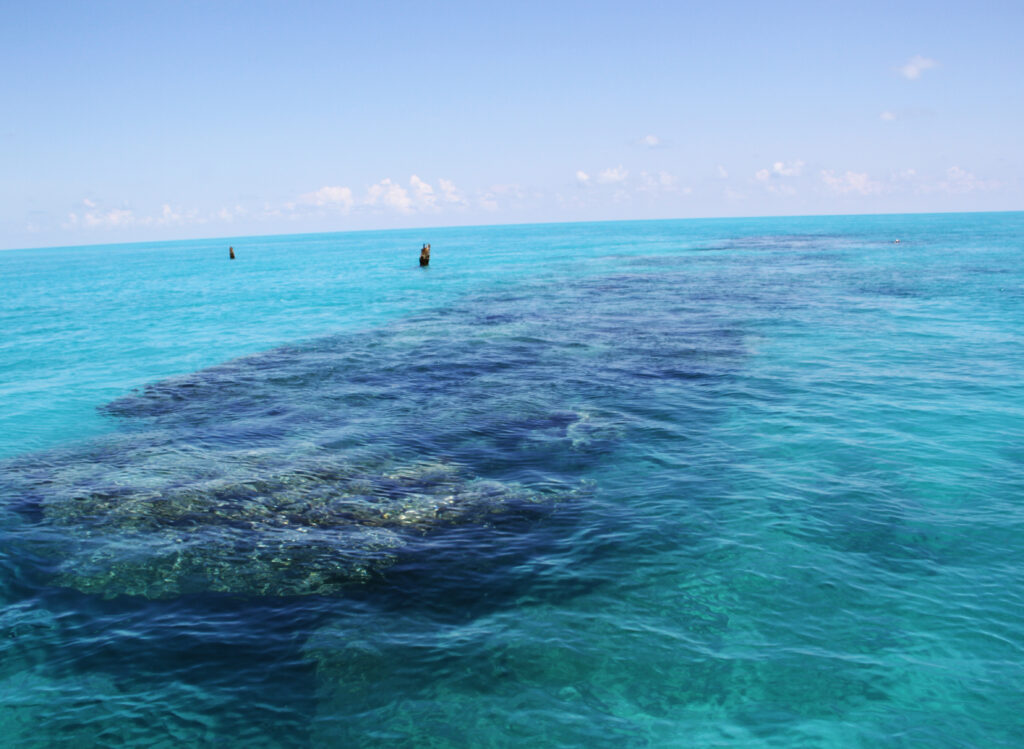
The Target Wreck, Florida Keys. Used by the U.S. military as a practice bombing target. Photo credit: Sid Dobrin (used with permission).
My claim of ecocriticism’s ocean deficit isn’t simply a call for more articles and books about ocean. It’s a critique of ecocriticism’s fundamentally land-based epistemologies, methodologies, and agendas. Ecocriticism, after all, was forged of the earth. It emerged in an atmosphere of terrestrial thinking, often identified as a “land ethic,” a mindset frequently attributed to Aldo Leopold and the notion of “Thinking Like a Mountain.” As Greg Garrard puts it while explaining the political nature of ecocriticism, “Ecocritics generally tie their cultural analyses explicitly to a ‘green’ moral and political agenda” (3). Green. Not Blue. The metaphors are telling. Ecocriticism’s terrestrial primacy has privileged research, writing, art, teaching, and advocacy that operate with a land-based linearity. And, as we see with the history of maritime law, land-based thinking just doesn’t translate into marine environments as though both spaces are homologous. That is, land-based thinking and ocean-based thinking are not the same.
I wrote Blue Ecocriticism with the intent of unearthing ecocriticism and promoting more fluid, less linear/terrestrial ways of thinking about text, environment, space, and place. Blue Ecocriticism is a solution comprised of many components dissolved within ecocriticism and ecocomposition: environmental humanities, literary studies, digital humanities, visual rhetoric, indigenous studies, ecological literacy, eco-cosmopolitanism, the politics of literacy, feminist new materialism, object-oriented ontology, animal studies, ecofeminism, postcolonial studies, visual rhetoric, scale and scalar thinking, data visualization, space, place, embodiment, social justice, and protein economies, to name but a few. Blue Ecocriticism, like the ocean, is a site of mixing, a gyre of methodologies.
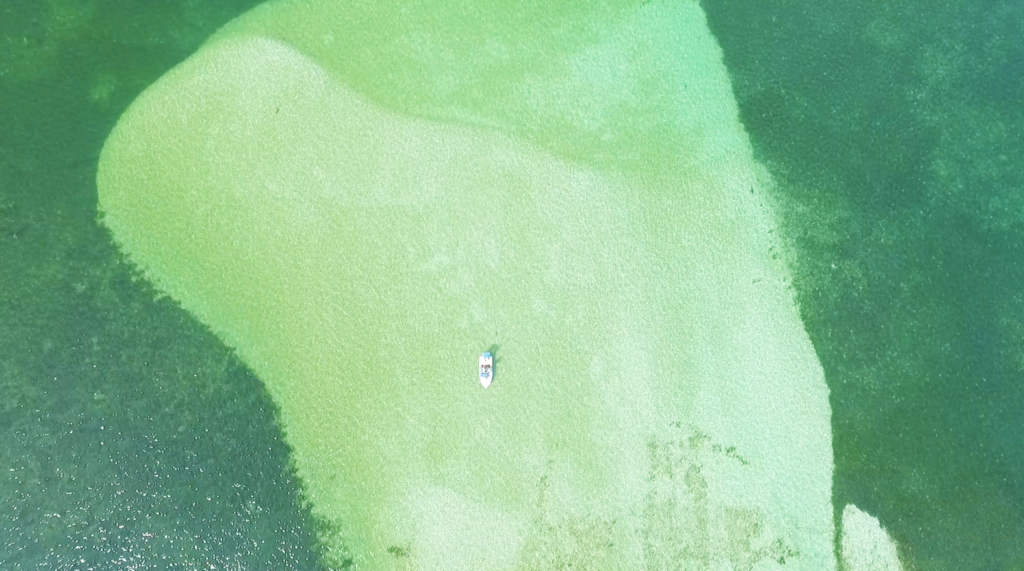
Aerial view of Florida Keys grass flats. Photo credit: Sid Dobrin (used with permission).
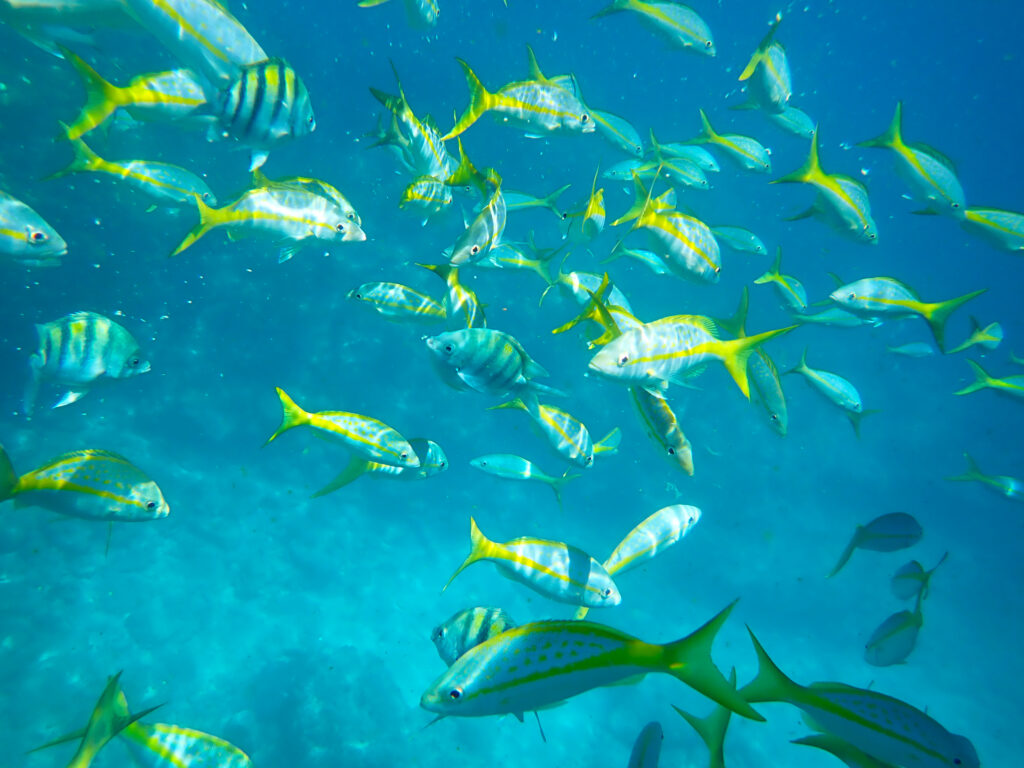
A school of yellow tail snapper. Due to overfishing, harvest limits were imposed beginning in 2015. Photo credit: Sid Dobrin (used with permission).
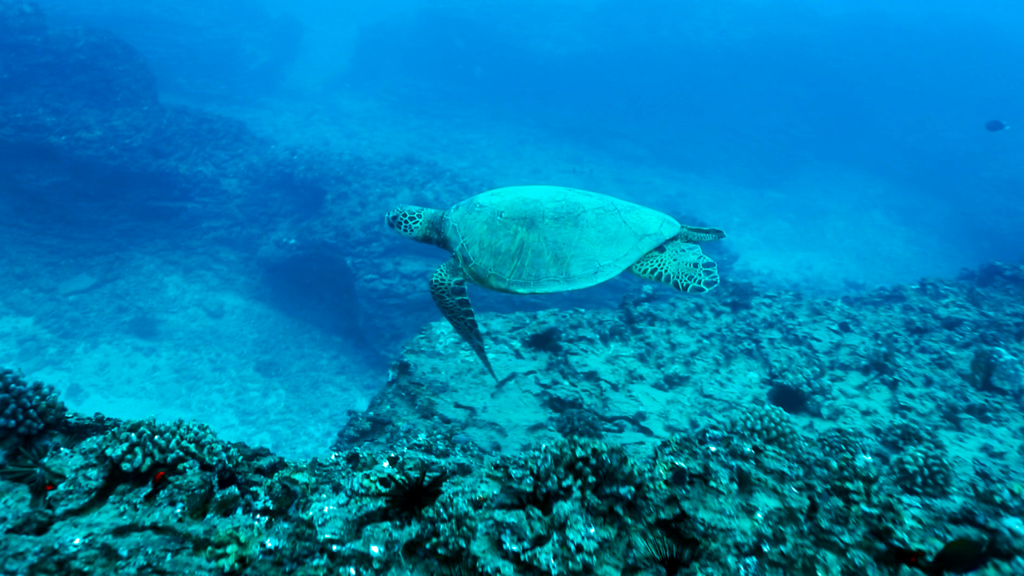
Green sea turtle, Pacific Ocean. Photo credit: Sid Dobrin (used with permission).
On the surface, Blue Ecocriticism’s claim appears straightforward: ecocriticism should address its ocean deficit. However, the depth of my argument – I hope – is more complex, asking how the representation of ocean in cultural imaginaries contributes to the ecological and environmental crisis in which we now find the global ocean. And, a la Timothy Clark, can engaging those representations actually inspire advocacy and action (18)? As such, Blue Ecocriticism emerges from within the environmental humanities as part of the new thalassology, the blue humanities, and the maritime humanities in order to invigorate ecocriticism’s oceanic engagement. My objective in Blue Ecocriticism is not to delineate boundaries between blue ecocriticism and ecocriticism. Disciplinary boundaries reek of linearity, of terrestrial logics and colonization. Blue Ecocriticism, instead, works to saturate and seep between and among disciplinary fissures. It is at once a call for academic work in ecocriticism and a consideration of how such work might contribute to a more encompassing form of advocacy in favor of ocean conservation. At the same time, it also asks whether ecocritical considerations of texts and cultural imaginaries, in fact, can reinforce conservation practices (again, a la Clark).
I wrote Blue Ecocriticism because ocean (or saltwater) is simultaneously vital and corrosive. Ocean is archive and media. Ocean touches every aspect of life on this planet. Ocean is bound to natural history and anthropomorphic history. As such, I wanted to examine the ways in which ecocriticism might reveal how we understand ocean and how oceanic thinking might inform what comes next for ecocriticism.
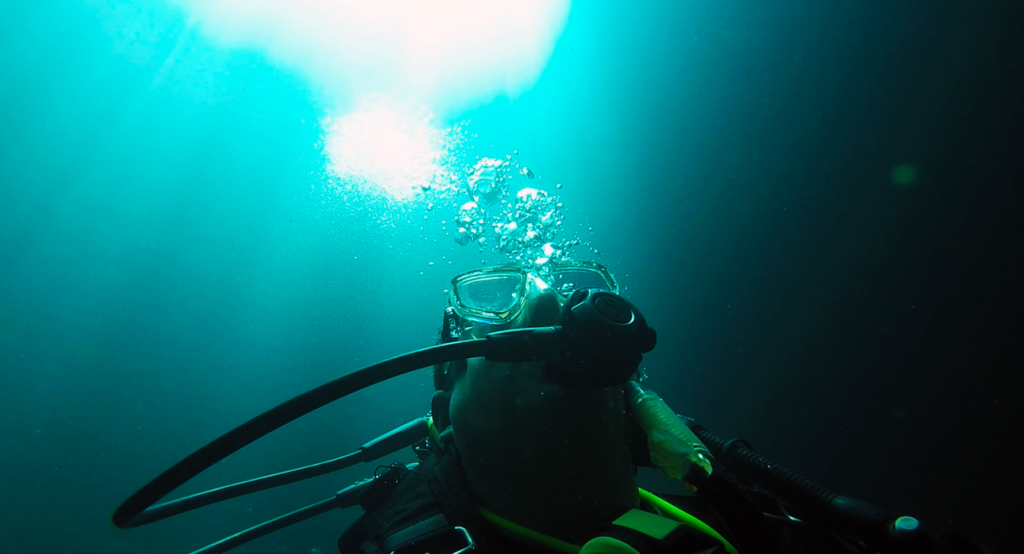
Sid Dobrin ascending. Photo credit: Sid Dobrin (used with permission).

Sidney I. Dobrin is Professor and Chair in the Department of English at the University of Florida. He is the founding of the Director of the Trace Innovation Initiative. He is the author of five books, most recently Blue Ecocriticism and the Oceanic Imperative (Routledge 2021) and Fishing, Gone? Saving the Ocean through Sportfishing (Texas A & M University Press, 2019), and is the editor/co-editor of fourteen collections. He serves as a Digital Thought Leader for Adobe and as Co-Chair of the American Sportfishing Association’s Media Committee.
